Paste for removing hair from cats: selection and secrets of use
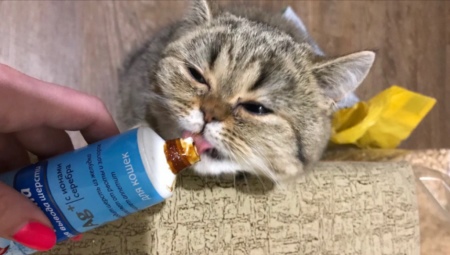
Cats and cats are so clean that they lick their fur several times a day, some of which gets into their digestive tract. A moment comes when the owner of the animal notices that something was wrong - the pet often began to vomit. This picture is unpleasant: for a pet - health problems, and for a person - an unpleasant cleaning, a trip to the veterinarian, and in the most severe cases it is fraught with the loss of the pet.
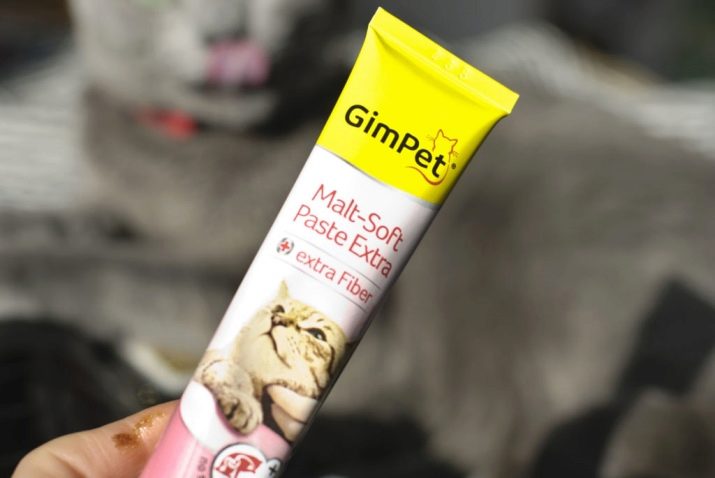
How does wool enter the body?
Domestic cats constantly lose their undercoat, as they do not feel the change of seasons. And therefore they lick themselves due to their natural cleanliness. Part of the undercoat remains on furniture, floors and other things, which are then removed from the premises during cleaning. The rest of the wool - about 30% of the licked amount - gets inside, into the stomach of the animal, since in cats the papillae on the tongue are directed backward.
Part of this wool that has entered the body passes through the intestines in transit and comes out naturally along with feces. Animals regurgitate some part, and the remaining wool is formed in lumps in the stomach and fills its volume. These lumps resemble wool matted in felt.
You can often observe the following picture: the animal eats a little, often runs to the bowl. Cats have a false sense of satiety. This is due to the fact that there are also receptors in the walls of the stomach that react to the degree of fullness of the stomach. These receptors send an impulse to the hypothalamus, that is, to the food center, which is responsible for the feeling of fullness.

Why are hairballs dangerous?
The resulting pylobezoars enter the intestine, causing obstruction.As a result, various kinds of enteritis (inflammatory processes) occur in the gastrointestinal tract and colitis in the intestine.
To avoid pet health problems, it is necessary to use malt paste to remove hair from cats. It is used for both prevention and treatment.
Malt pasta
For cats, use malt paste to remove pylobezoars from their stomach. Many people mistakenly believe that the paste is used to dissolve wool and wool seals. The composition often includes fats, dairy products, oils, malt. Fats envelop the hair, and insoluble fiber softens the lumps and all this contributes to an easy painless removal from the body. Also, the paste prevents constipation, sometimes vomiting, and prevents inflammation.
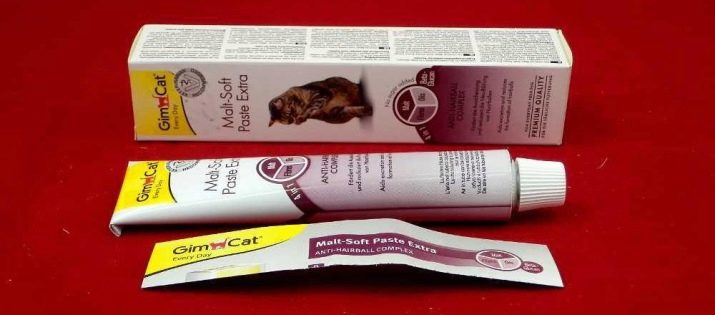
Application
As a preventive measure, this paste can be given to kittens from 12 weeks of age and adults. Reception - 6 cm daily, which is equal to 3 g of the required dosage. Better immediately from a tube, applying to the nose, or you can mix it into the feed if the animal is naughty and does not want to lick the paste off the nose. If necessary, the dosage can be doubled. Store and use at room temperature.

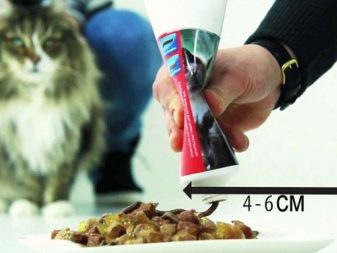
Popular types of pastes
Here are some of the popular types of this paste for cats.
Gimcat
One of the best of its kind for distilling fur from the cat's body. It contains 43% malt extract, vegetable oil, 4% fiber (which is quite a lot for such pastes), fats and yeast.
- Sugarless.
- No flavor enhancers.
- No colorants or preservatives.
Prevents vomiting, promotes the natural release of a hairball with feces. It is recommended to feed at room temperature. Animals consume it with pleasure. In addition, duo-pastes have recently begun to be produced in various flavors: chicken, cheese and fish. According to the manufacturer of this paste, all products are tested for palatability. Experienced groups of cats are selected and offered a variety of flavors of pasta to choose from. The composition that cats eat more readily is sent to production.
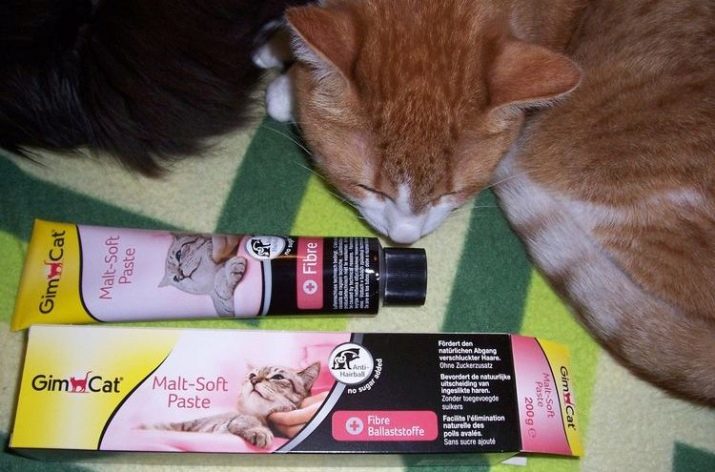
Beaphar
Used to release bezoars from the digestive tract in cats and kittens from 12 weeks old. Along the way, it removes toxins, maintains the beauty and health of the animal's coat.
The composition includes: fats, milk and dairy products, malt (13%), inactivated yeast, mannanoligosaccharides, fiber 0.013%. And also a high content of beneficial Omega-3 and Omega-6 fatty acids for the beauty and health of the coat. Lecithins in malt paste contain choline for the normal functioning of the nervous system, and its lack affects the functioning of the liver. And inositol, which is involved in the normalization of cellular metabolism.
Dose at 3 cm, and during the period of active molting of the animal, this amount is increased: in long-haired cats - 6-12 cm, in short-haired cats - 4-8 cm of funds.
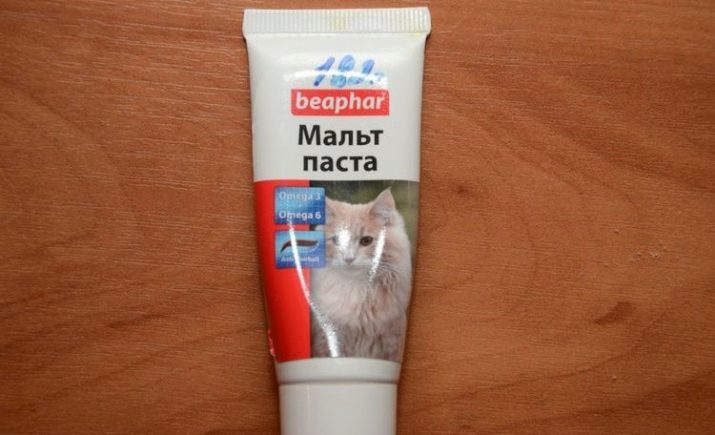
Cliny
This product is enriched with silver ions, which have a proven bactericidal effect, and is non-toxic. Manufacturer - Russia. Produced in a soft tube for ease of use. Eliminates gagging, constipation and increases the pet's appetite.
Ingredients: water with silver ions, malt extract, fats, milk, vegetable fiber.
Dosage regimen: for adults and kittens whose body weight is up to 2 kg - 2 cm, over 2 kg - 5 cm of the product daily. If necessary, the amount of funds is doubled. Recommended to use before meals, but can be mixed with food if the cat does not eat neat.

Kittymalt hairbal Remady paste (8 in 1 Exel)
The composition includes vegetable oil, malt, salmon oil as a source of Omega 3, 6 and 9, vitamin E. The product is suitable for both adults and kittens. But not all pets like the distinct smell and taste of fish. For treatment, the required dosage is given once a day for a course of 3 days, and then the paste is continued once a week.
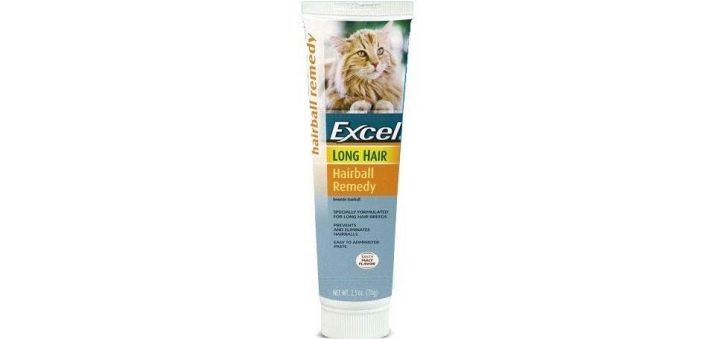
Sanal Malt Pasta fortified treat
A delicacy - this is because it is very well eaten by cats, as it tastes like meat. The natural fortified composition makes this flock extremely useful. The main active ingredient is concentrated malt. The product is enriched with vitamin E. Therapeutic dosage is 6 cm per day for 3-5 days.

Ecoprom "Stop the problem"
This product is similar in composition to Cliny paste, but is much cheaper. It also contains malt extract, oil (corn oil is used), soy protein and wheat bran. Sorbic acid preservative. Can be used for both cats and ferrets.
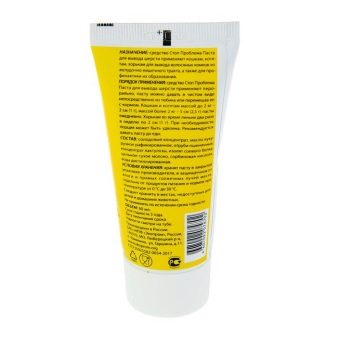
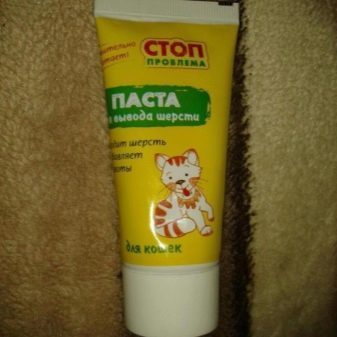
As can be seen from the description, the composition of almost all pastes is the same, the differences are only in the amount of liquid insoluble fiber (malt). The more malt in the composition, the more effective the paste. And also it is worth focusing on the taste preferences of your pet.
Whichever paste you choose for your pet, there are features of its use.
- The paste works most effectively when applied before meals or 1.5 hours after meals.
- The use of malt paste in conjunction with drugs that are given orally is unacceptable. Malt paste envelops the drug and removes it from the body almost unchanged, so the therapeutic efficacy of the drugs may decrease.
Application for exacerbations of chronic diseases of the gastrointestinal tract is undesirable.
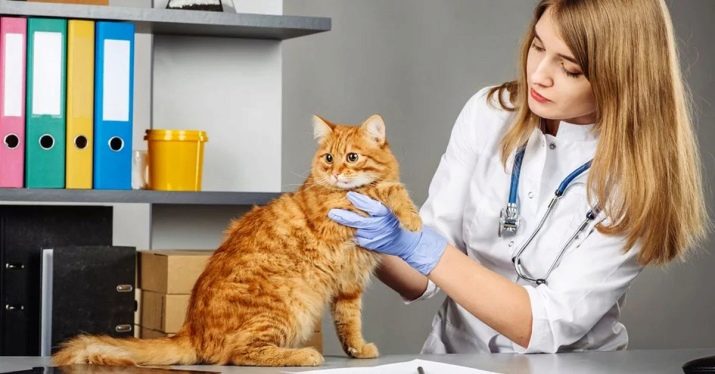
Store an unopened tube of paste at a temperature of 15-25 degrees Celsius. The opened paste is placed in a refrigerator and stored at a temperature of 8-10 degrees.
As you know, prevention is cheaper than treatment. Therefore, it is necessary to approach prevention in a comprehensive manner, using means for removing wool. It is necessary to carry out constant combing with furminators and slickers, especially for long-haired pets, and also use vitamin and mineral complexes for skin and wool in the diet.
During the period of seasonal molting, it is imperative to use malt paste for the prevention of digestive diseases.
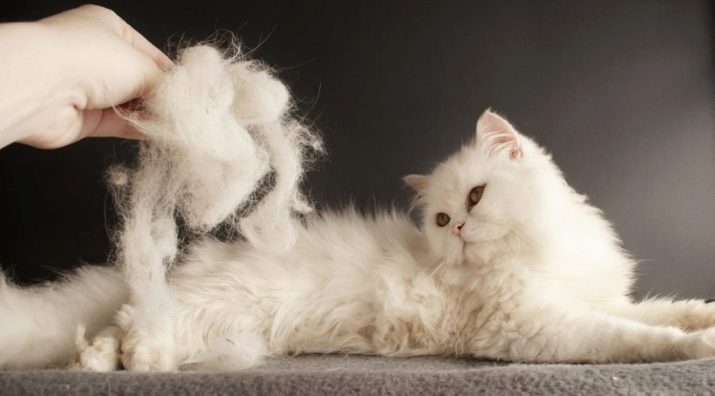
About the paste for removing hair from cats Gimpet (Gimcat) Malt-Soft, see the next video.
































